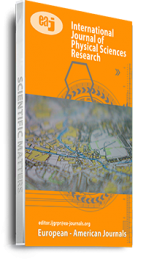Human beings are dependent on forests for various livelihood needs. Forests offer a variety of benefits, including ecological, social as well as economic benefits. As such, the development and conservation of forests around the world is vital. Monitoring of the forest ecosystem is mandatory in order to detect any changes in the ecosystem. Forest cover change detection gives an opportunity to track the productivity, health and the forest cover as well over the years so as to enable proper management, promote conservation and enhance functionality. Optical and radar remote sensors make it possible to monitor changes by use of various analytical techniques that include visual interpretations. The study investigated how remote sensing can be applied to detect change in forest ecosystem and to assess the rate of change of Ngong Hills Forest in Kenya. The project sought to determine whether anthropogenic activities are the major cause of the change in Ngong Hills Forest. Data from satellite images was analysed from 1984 to 2019 to identify the changes that have occurred on the ecosystem. Landsat and Rapid-Eye images were used to inform on change detection. In this case, rapid eye data was found to be better than Landsat data in informing on change detection because of its high resolution thus high precision and better results. The changes depicted by the remotely sensed data were mapped for ease of analysis and visualization. The research depicted a massive decrease in the forest cover despite the afforestation efforts by the Kenya Forest Service (KFS) in the 1990s. The forest has been depreciating massively from 1995 depicting greater deforestation rates between the years 2010 and 2019. This depreciation has been acknowledged by the KFS as it is said to be occurring due to the anthropogenic activities mainly settlement and logging. The means of detecting change by use of remote sensing is thus able to identify the exact areas that change has occurred and thus provide insight for the Kenya Forest Service and other ecosystem protection bodies on the most affected areas and the extent of change. Once the study area is mapped, it is possible to calculate the areas that have decreased in vegetation quantity, areas where increase has occurred as well as the areas that have remained unchanged. The findings of the study make it possible for management agencies to enforce conservation because of the presence of reliable data.
Keywords: Anthropogenic Activities, Assessment, Impact, Kajiado Kenya, Ngong Hills Forest, Remote Sensing

